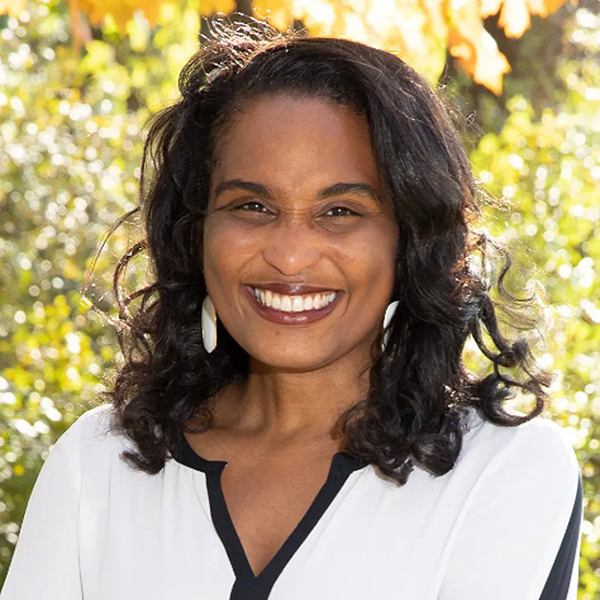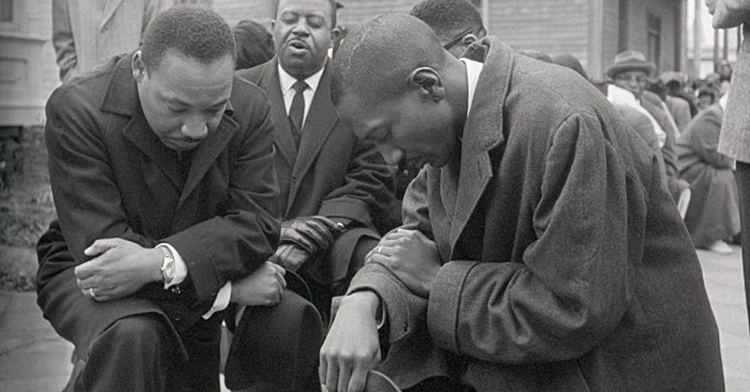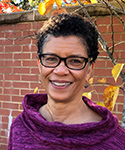One might look to evangelical Christians as role models for many things. They tend to have energy, a taste for innovation, love for the Bible and Jesus and, above all, they extend the gospel well to those who’ve not heard or yet believed.
But for racial reconciliation? Not so much. Evangelical organizations exist to share the gospel. Other concerns, however noble, are often ancillary.
Or at least they were. Recent reporting in Time magazine suggests evangelical megachurches may be getting religion on race. This is hardly an avant-garde issue in 2010, but once evangelicals convert on something, they really convert. Ask Bono why he targeted evangelicals to inspire all of America to promote aid to Africa.
And, if you ask which of the major evangelical institutions are seriously committed to reconciliation, InterVarsity Christian Fellowship -- the North American branch of a worldwide missions organization on college and university campuses -- comes up quickly.
The group’s theology and practice of biblical study and its emphasis on demanding repentance have meant it had to transform the white institution it once was. It has been willing to pay a price, both in public messiness and in difficult lives for some key leaders and chapters. It has been willing to let board members, funders and students walk away when they have disagreed or their passion was elsewhere.
Yet people at IV also acknowledge their failures. Racial reconciliation is not an issue on which anyone can claim victory. As I spoke to current and former students and staff in interviews, they immediately began confessing ways they fall short. IV is a rare mission organization that evangelizes without triumphalism.
Even so, or just so, IV offers a model for how a large institution (it has about 1,400 staffers in the United States) has woven racial reconciliation into its DNA.
“If we’re going to create witnessing communities on campus that are growing in love for every ethnicity, we can’t do that if we’re not living out that commitment as an organization,” said Paula Fuller, an IV vice president and director of multiethnic ministries.
Questions to consider
Questions to consider on this topic:
- For what issues would your organization be willing to change from top to bottom, at significant risk? Why? What would make such change worth it?
- How could you leverage the strengths in your organization’s history and present-day culture to bring about significant change?
- How would your institution react if an organization-wide initiative were negatively affecting the health of its people?
- How do the cross and resurrection weigh into your answer?
Turning the tanker
Founded at Oxford and Cambridge in the late 19th century (“varsity” is a Britishism for “campus”), is built on a philosophy of making space for students to lead their campus chapters, with professional staffers there to provide encouragement, support and, in IV parlance, “discipling.”
Its hallmarks are a weekly large-group meeting for praise and worship with a speaker; regular small-group Bible studies; summer camps to train leaders; and a triennial mission conference called Urbana, which has sent thousands of people into overseas missions.
Its national office in Madison, Wis., has seven senior staffers. Another thin layer of regional staff acts as middle managers over about 1,000 campus staff in 900 chapters on roughly 600 college campuses across the country. They, in turn, work with the 35,000 students in its ministries. The organization tries to stay lean, using its relatively small number of employees to raise up and empower student leaders on campus.
As a result, infusing the organization with a culture of reconciliation -- or anything, for that matter -- is more difficult than just issuing a mandate from above. Thus IV is also a study in how to turn around the “tanker” of a large, decentralized organization. Just how does one turn that tanker around with soft power -- with only a sail and no motor?
“Because we’re a geographically dispersed and bottom-up organization, and we focus on empowering students, our energy is put into asking, ‘What is God doing in a local community now?’ We don’t have that many opportunities to tell our national story or history,” Fuller said.
Rooted in history
In some ways, reconciliation has been on the IV agenda from the beginning as the organization took progressive, if not revolutionary, stands on race.
In 1948, IV quietly adopted an anti-segregation policy resolving that chapters at “Negro” colleges would be accepted without distinction, that conferences would be held only at non-segregated venues, and that the organization must “demonstrate that in Christ there is neither black nor white.”
In a story recounted in Keith and Gladys Hunt’s “For Christ and the University,” a wealthy national IV board member (and generous supporter) refused to include black students in IV meetings held in her elegant brownstone in New York in the 1940s. Jane Hollingsworth, a staffer at the time, challenged her. The woman threatened to report Hollingsworth to IV’s board. She responded: “Please do.” The woman eventually relented, and the story ends with the two of them kneeling together in prayer.
But there have been less-shining moments as well. The 1970 mission gathering at Urbana came on the heels of the racial unrest of the late 1960s. IV invited an African-American leader named Tom Skinner to give a keynote address. He gave a scalding-hot speech: “If you have any illusions that America was founded on godly principles, abandon them.”
Because white evangelicals had been silent on racism, he said, God had to raise up non-Christian leaders such as Malcolm X to tell blacks that their skin and culture are beautiful.
The pushback was immediate. “Both IV and Urbana leaders retreated,” according to Peter Cha, a professor at Trinity Evangelical Divinity School, former IV staffer and board member.
Racial reconciliation wasn’t a primary goal for Urbana organizers again for a generation. In 1991, IV staff noticed that UC Berkeley had just become a non-majority campus, a harbinger of more campuses and society in general doing the same. If IV was to reach such places, it had to be much less white itself.
“We had to ask what God was doing in the world,” said then-IV president Steve Hayner, who is now president of Columbia Theological Seminary in Georgia. “And if God was moving to the Southern Hemisphere and changing color in leadership, Urbana had to reflect that.”
Not everyone was happy with the change. Hayner had taken board members to see multiethnic work that students were doing in downtown Chicago and was “roundly criticized by loud voices on the board.” Hayner called it a “transformative moment.” They lost some board members over it, but by then also had some African-American board members who could support the effort.
People of color and women became much more prominent at the 1993 Urbana podium, and non-white music more prominent in worship. Again there was pushback. “People said we were just being politically correct,” Hayner said.
And staff and students wondered: Would IV retreat on race as it had after 1970?
Not this time. Hayner earlier had hired Sam Barkat, a Pakistani-American evangelical, as vice-president and director of multiethnic ministry. Barkat did more than advocate for minority status within the organization -- he sought out people of color who’d been wounded by IV and worked to bring about reconciliation.
There was coincidentally a push for board members no longer to serve lifetime appointments, which opened opportunities for people of color and women. Hiring non-white-male staff ministry-wide also became a priority. Again, there was pushback. But now racial reconciliation was “a core value, rather than simply one of those things that’s a biblical value to honor as convenient,” Hayner said.
These efforts bore fruit.
In 1990, about 16 percent of IV’s students were people of color; in 2008 that figure was about 26 percent. The organization counts some 250 people of color among its 1,400 or so paid staff, including two of seven senior staff. The demographics are growing closer to matching those of college campuses, where 31 percent of students are non-white, according to figures on IV’s website.
Yet the organization’s leaders acknowledge the work is not complete. “We have so much farther to go,” said Scott Wilson, IV’s director of communications.
Despite its decentralized structure, the national-level organization uses what leverage it has, which includes hiring and training and planning the Urbana gathering. Organizationally, racial reconciliation is stressed at all events and included in training for board members and senior and campus staff. IV staffers raise their own salaries, and institution-wide now give 1 percent of what they raise as a “tithe” to people of color on staff. IV has found that staffers from communities with less access to money and power often struggle to raise enough support for their own salaries.
“Tolerance is very nice,” Cha said. “But it doesn’t have compelling energy to which you will submit even your life. IV has that.”
Chris Rice, co-leader of the Center for Reconciliation at Duke University, said that what impresses him most about the organization is that “InterVarsity has allowed this to be messy.”
That messiness has meant some embarrassing and public conflict. That’s what happened at IV’s national staff conferences in the early 2000s, where racial and ethnic tensions flared.
Several gifted leaders who were influential to IV’s racial ministry had untimely deaths, including Skinner, the 1970 Urbana speaker. Spencer Perkins, Rice’s partner in ministry and co-author of the book “More than Equals,” collapsed during a conference with major IV participation in 1998 and died shortly afterwards -- traumatic losses for the organization.
“Following Christ is difficult. You’re crucifying your flesh,” Fuller said. “This mantle has been passed by those who came before.”
Reconciliation on campus
In the end, reconciliation is more about people than policies, and Charlene Brown’s experience is an illustration.
In the early 2000s, she was the talented student leader of an African-American ministry at the University of Virginia called The Impact Movement. And she had a problem: Her group had no professional staff.
“We were in a bind in terms of leadership and how to create student leaders who were passionate about the ministry,” she said. So she asked more established predominantly white ministries for help.
Only IV said yes. And IV members saw this as an opportunity to learn, not just to offer their leadership to Impact’s members.
“They said, ‘Here, set the topic, and we’ll discuss what you want to talk about,’” Brown said.
The IV chapter had white staffers who worshipped in an African-American church and lived in a black neighborhood. Still, adjusting the chapter’s weekly “large group” -- IV’s most public, planning-intensive event -- proved difficult.
“They would offer to let Impact bring an electric guitarist,” Brown said, shaking her head at the invitation to bring an instrument associated with a white style of worship to an already too-white group. “They’d ask, ‘Why do we need a drummer?’ [But] drums are important in the African-American church.”
Eventually the group reached a balance with a more blended style of worship: sometimes gospel, sometimes not, all equally uncomfortable.
“Trying to be able to clap on the right beat was funny, and helped break the ice with one another,” Brown said.
The fruits of such painstaking work over worship were undeniable at UVa. Impact had about 250 students, and IV had previously had around 100. IVers started doing urban missions in Charlottesville, staying with families and worshipping in Section 8 housing. Soon, their integrated group of 350 students worshipping together “had other campus ministries jealous,” Brown said.
Brenda Salter McNeil, a former IV staffer and regular speaker on this subject, says IV has committed to making racial reconciliation not “an elective course.” To live out the gospel with IV, one has to major in the work of racial reconciliation.
Brown still is involved with IV as a student at Duke Divinity School. But she continues to face the challenge of integrating a monocultural ministry -- this time in a chapter of Duke undergraduates that is majority Asian.
“Everyone thinks about black/white issues, but Latino-specific and Asian-specific ministries are growing, too,” she said.
Intellectual foundation for lasting change
Why has IV been willing to tangle with the difficult issues of creating a multiracial, multiethnic ministry? Because, its leaders say, it’s biblical.
“I did an eight-year study of Habakkuk,” said Wilson. “And it’s pretty hard to read the minor prophets without hearing God’s passion for justice.”
Cha pointed to Jesus’ prayer in John 17 that his followers would all be one, “that the world might believe,” and to Ephesians 2’s description of Christ’s breaking down the dividing wall between Jew and Gentile.
Hayner said he turned to Scripture to refute accusations that IV was simply being politically correct. He points to Acts’ description of the Holy Spirit driving the church in mission across cultures, which the Old Testament shows was God’s intention from the beginning.
“This is not just a casual theme in Scripture,” Hayner said.
IV is also a ministry that loves the university. “They reflect and teach really well,” Rice said.
IV isn’t interested in black anger, white guilt, Asian mediation or Latino growth for their own sakes. It pushes further for the intellectual foundation for lasting change. IV has a sister publishing house, InterVarsity Press which published important works on reconciliation, unusual for an evangelical press. These include -- in addition to Rice and Perkins’ book -- “Your God Is Too White,” published in 1970, and many volumes since.
Its stories -- of both success and failure -- are set in the context of a bigger story. Hayner speaks of IV’s commitment to Jesus’ lordship, mediated by Scripture, as its “theory of change.”
“This is hard work,” Hayner said, “ but … it has God’s fingerprints all over it; God is rejoicing in all this pain, because it’s helping our hearts to be about God’s heart.”








